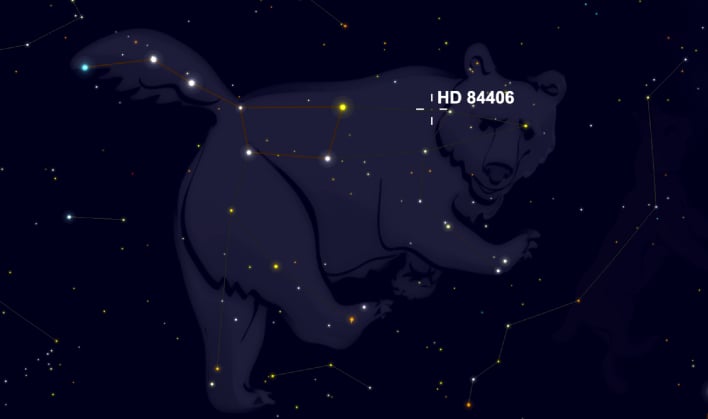How To Find NASA’s First Space Telescope Target, A Sun-Like Star In The Big Dipper

Since the launch of the James Webb Space Telescope (JWST), it has journeyed approximately 1 million miles away from Earth. This past week, the telescope reached its destination for orbit and began the intricate process of mirror alignment. NASA hopes to have the mirrors fully aligned around the end of April. But before that happens, the space telescope will gather engineering data as it takes aim at a Sun-like star about 260 light years away.
The images that astronomers and scientists are most looking forward to are still around 2 months out. However, JWST will be targeting a Sun-like star (HD 84406) to begin gathering important engineering data as the mirror alignment process takes place. While the star will be too bright for JWST to study once in focus, NASA says it is the perfect target for now. HD 84406 has a magnitude of 6.7 at a distance of about 260 light-years, according to Gaia. It is located in the Ursa Major constellation, which will be viewable by Webb during this time of the year. The team will use to the star to dial in the telescope before it begin its search for distant photons.
If you are curious as to where the star is located in the night sky, it is actually the tip of the tail on the big bear, aka Ursa Major. You will need a telescope or high-power binoculars to view the star, due to it being too dim to see with the naked eye.
🌟 Star light, star bright…the first star Webb will see is HD 84406, a Sun-like star about 260 light years away. While it will be too bright for Webb to study once the telescope is in focus, it’s a perfect target for Webb to gather engineering data & start mirror alignment. pic.twitter.com/DleVjDZz8B
— NASA Webb Telescope (@NASAWebb) January 28, 2022
In a recent blog post, Bill Ochs, Webb project manager, was quoted as saying, "After the last wing deployment, more than one person made comments like, ‘it seemed so simple; did we overstate the complexity and difficulty of the deployments?" He added, "The perfection of the deployment execution and the subsequent activities reflects directly on how hard everyone worked and the diligence and sacrifice it took on the part so many people. The fact that it looked simple is a tribute to all those over the years who have worked towards Webb mission success."
JWST fired its final correction burns last week as it approached its destination for orbit. This placed the telescope in its final orbit around the second Sun-Earth Lagrange point, or L2. Webb's orbit will provide a wide view of the cosmos at any given moment, as well as keep it shielded from the heat of the Sun, Earth and Moon. The telescope needs to remain cold in order for the instruments to function and perform optimally. After completing its mirror alignment, it will still need to calibrate NIRcam, and the other three spectrographic instruments before capturing and sending back the images everyone is waiting for.

